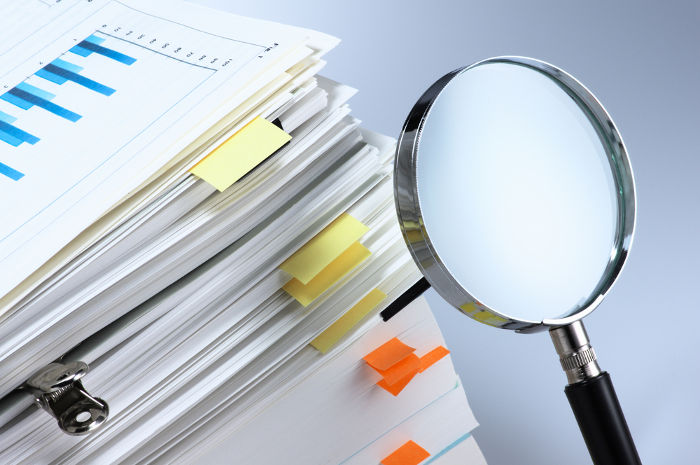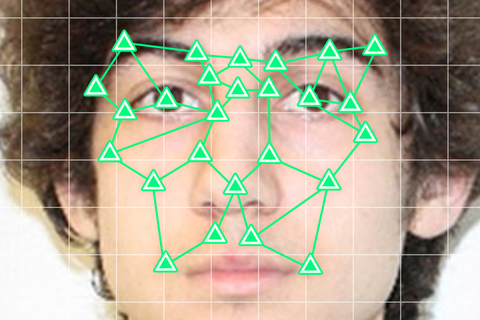Summary: Deep learning and Big Data are being adopted in law enforcement and criminal justice at an unprecedented rate. Does this scare you or make you feel safe?
 When you read the title, whether your mind immediately went for the upstairs “H” or the downstairs “H” probably says something about whether the new applications of Big Data in law enforcement let you sleep like a baby or keep you up at night.
When you read the title, whether your mind immediately went for the upstairs “H” or the downstairs “H” probably says something about whether the new applications of Big Data in law enforcement let you sleep like a baby or keep you up at night.
You might have thought your choice of “H” related to whether you’ve been on the receiving end of Big Data in law enforcement but the fact is that practically all of us have, and for those who haven’t it won’t take much longer to reach you.
There is an absolute explosion in the use of Big Data and predictive analytics in our legal system today driven by the latest innovations in data science and by some obvious applications.
It hasn’t always been so. In the middle 90s I was part of the first wave trying to convince law enforcement to adopt what was then cutting edge data science. At the time that was mostly GIS analysis combined with predictive analytics to create what we called predictive policing. That is predicting where and at what time of day crime of each type was most likely to occur so that manpower could be effectively allocated. Seems so quaint now. It was actually quite successful but the public sector had never been quick to adapt to new technology so there weren’t many takers.
That trend about slow adoption has changed. So while accelerating the usage of advanced analytics to keep the peace may keep some civil libertarians up at night, it’s coming faster than ever, and it’s our most advanced techniques in deep learning that are driving it.
By now you’ve probably figured out the deep learning is best used for three things: image recognition, speech recognition, and text processing. Here are two stories illustrating how this is impacting law enforcement.
Police Ramp Up Scrutiny Over On Line Threats
 The article by this title appeared in the July 20 WSJ. Given what’s been happening recently both internationally and at home most of us probably applaud the use of text analytics to monitor for early warning signs of home grown miscreants. The article states “In the past two weeks at least eight people have been arrested by state and federal authorities for threats against police posted on social media”. It remains to be seen if these will turn into criminal prosecutions and how this will play out against 1st Amendment rights but as a society we seem to be OK for trading a little of one for more of the other.
The article by this title appeared in the July 20 WSJ. Given what’s been happening recently both internationally and at home most of us probably applaud the use of text analytics to monitor for early warning signs of home grown miscreants. The article states “In the past two weeks at least eight people have been arrested by state and federal authorities for threats against police posted on social media”. It remains to be seen if these will turn into criminal prosecutions and how this will play out against 1st Amendment rights but as a society we seem to be OK for trading a little of one for more of the other.
It’s always in the back of our minds whether this is Facebook, Twitter, Apple, Google and the others actively cooperating in undisclosed programs to aid the police, but this article specifically calls out the fact that the police were the ones doing the monitoring. Whether they’ve built these capabilities in-house or are using contractors isn’t clear. What is clear is that advanced text analytics and deep learning were the data science elements behind it.
Taser – the Data Science Company
 The second example comes from an article in Business Week’s July 18 issue, “Will a Camera on Every Cop Help Save Lives or Just Make a Tech Company Richer”.
The second example comes from an article in Business Week’s July 18 issue, “Will a Camera on Every Cop Help Save Lives or Just Make a Tech Company Richer”.
Taser – a tech company? When I think about Taser, the maker of the ubiquitous electric stun gun, I am much more likely to associate them with Smith & Wesson than with Silicon Valley and apparently I couldn’t be more wrong.
In short the story goes like this. In the 90s Taser dominated the market for non-lethal police weapons to provide better alternatives for a wide variety of incidents where bullets should not be the answer. By the 2000s Taser had successfully saturated that market and its next big opportunity came from the unfortunate Ferguson Mo. unrest.
That opportunity turned out to be wearable cameras. Although the wearable police cameras date back to about 2008 there really hadn’t been much demand until the public outcry for transparency in policing became overwhelming.
Taser now also dominates the wearable camera market. Like its namesake stun gun however, sales of Tasers or wearable cameras are basically a one-and-done market. Once saturated, it offers only replacement sales, not a robust model for corporate expansion. So far this sounds more like a story about a hardware company than a data science tech company and here’s the transition.
The cameras are producing huge volumes of video images that need to be preserved at the highest levels of chain-of-evidence security for use in criminal justice proceedings. Taser bought a startup in the photo sharing space and adapted it to their new flagship product Evidence.com, a subscription based software platform now positioned as a ‘secure cloud-based solution’.
According the BW article, “4.6 Petabytes of video have been uploaded to the platform, an amount comparable to Netflix’s entire streaming catalogue”. Taser is a major customer of MS Azure. And for police departments that have adopted, video is now reported to be presented as evidence in 20% to 25% of cases.
But this story is not just about storing recorded video. It is about how police and prosecutors have become overwhelmed with the sheer volume of ‘video data’ and the need to simplify and speed access. The answer is image recognition driven by deep learning. Taser now earns more than ¾ ths of its revenue from its Evidence.com platform and is rapidly transforming from hardware to app to data science company to answer the need for easier, faster, more accurate identification of relevant images.
The Direction Forward
You already know about real-time license plate scanners mounted on patrol cars that are able to automatically photograph license plates without operator involvement, transmit the scan to a central database, and return information in real time about wants and warrants associated with that vehicle.
What Taser and law enforcement say is quite close is a similar application using full time video from police-wearable cameras combined with facial recognition. Once again those civil liberties questions will have to be answered but there’s no question that this application of data science will make policing more effective.
About those huge volumes of videos and the need to recognize faces and images. There are plenty of startups that will benefit from this and many with products already in commercial introduction. Here’s a sampling.
Take a look at Nervve Technologies whose byline is “Visual search insanely fast”. Using their visual search technology originally developed for government spy agencies they are analyzing hours of sporting event tape in a few seconds to identify the number of times a sponsor’s logo (on uniforms or on billboards) actually appears in order to value the exposure for advertising.
And beyond simple facial recognition is an emerging field called facial or emotional analytics. That’s right, from video these companies have developed deep learning models that predict how you are feeling or reacting.
Stoneware incorporates image processing and emotional analytics in its classroom management products to judge the attentiveness of each student in a classroom.
Emotient and Affectiva have similar products in use by major CPG companies to evaluate audience response to advertisements, and to study how NBA spectators respond to activities such as a dance cam.
Real time facial-emotional scanning of crowds to find individuals most likely to commit misdeeds can’t be far away.
For audio, Beyond Verbal has a database of 1.5 million voices used to analyze vocal intonations to identify more than 300 mood variants in more than 40 languages with a claim of 80% accuracy.
All of these are deep learning based data science being put rapidly to work in our law enforcement and criminal justice systems.
About the author: Bill Vorhies is Editorial Director for Data Science Central and has practiced as a data scientist and commercial predictive modeler since 2001. He can be reached at:
